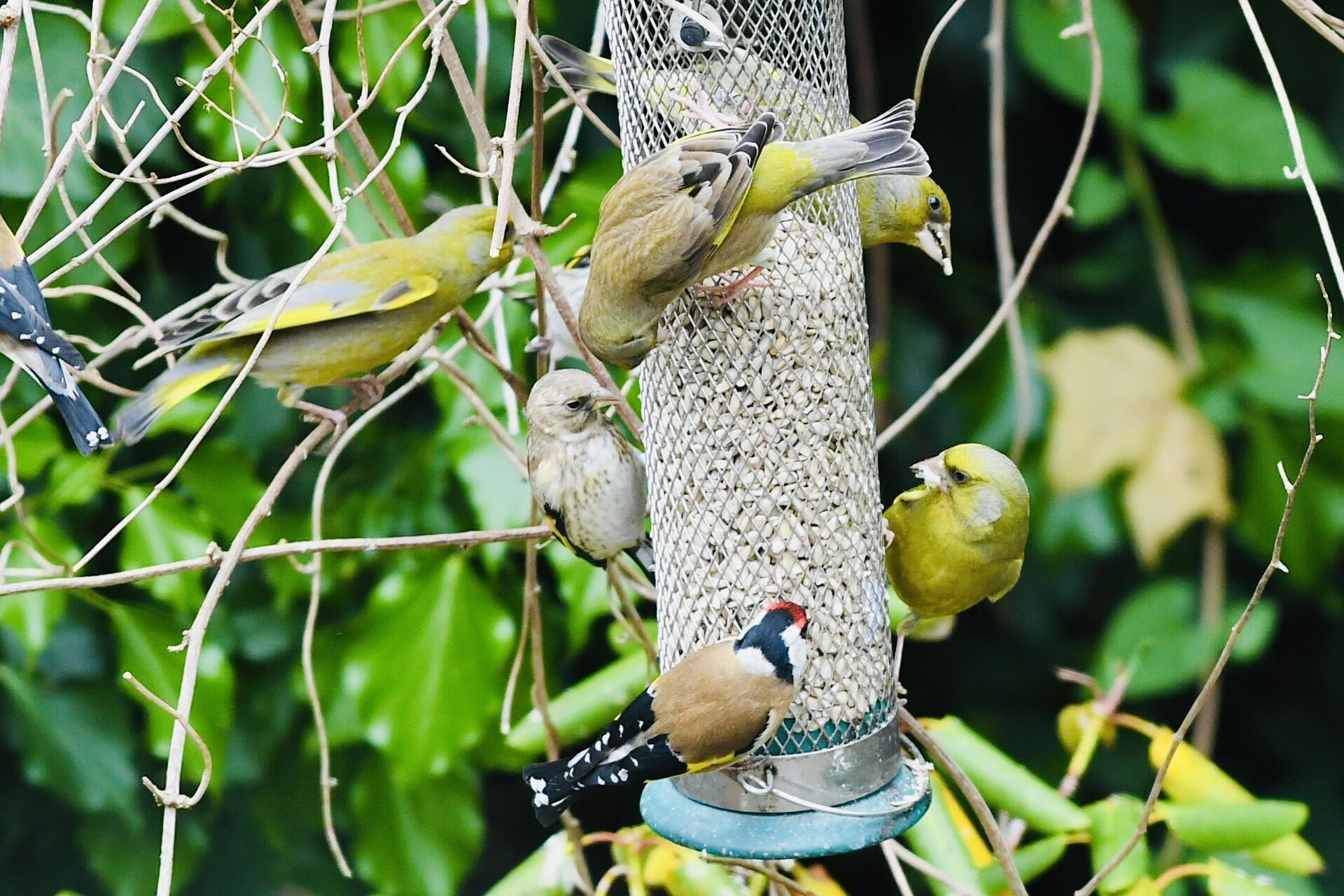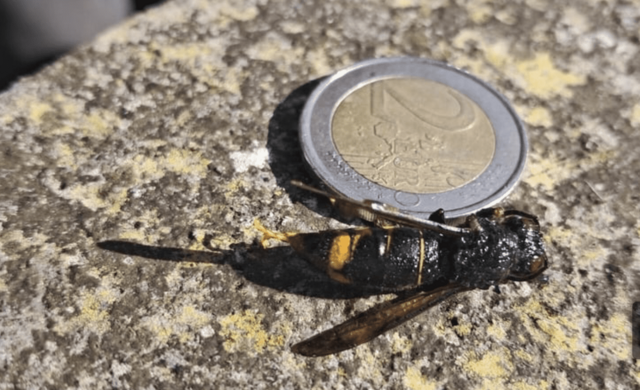IT’S safe to say – with the evidence of this picture – that the demise of the greenfinch has been exaggerated. In fact, it looks like this beautiful bird has returned from the dead.
This week Dúlra's bird feeder was mobbed by them – two whole families dining on sunflower hearts, which their heavy bills make light work of. It’s proof that not everything in Irish nature is in decline.
In Dúlra's youth, they were plentiful and back then it was peanuts that they’d munch through, ripping the old red plastic net to pieces before devouring the nuts. They were omnipresent – as common in our gardens as blue tits. And while other finches’ nests are practically impossible to find – tiny cups of moss hidden high up in the branches or in the middle of thickets – greenfinches are an altogether less tidy bird. They build a sprawling nest at the top of hedges. They particularly love laurels.
But then disaster struck them. A Covid-like disease somehow targeting greenfinches more than any other emerged in 2005. Trichomonosis hit other garden birds too, but it was the greenfinch which bore the brunt of its reach. Their numbers plummeted as the disease spread through Ireland, Britain and Europe.
It’s thought that garden bird feeders helped spread the disease as birds fed close to each other, sharing the same food. People like Dúlra who love to feed birds through the winter were suddenly the culprits of the bird world and no longer the heroes.
You’d find the sick and dying birds in the garden, too ill to move. When you approached, some would shake themselves out of their stupor and fly off. But others would just sit helpless in your hand. The disease had taken them – or was about it.
And so for the last 20 years, greenfinches have been all but absent from Irish gardens. But somehow, it seems, they’ve come back from the brink.
It’s clear the conditions in which this bird can thrive still exist. There’s plenty of food and plenty of hedges for them to breed in. And so it seems that they simply retreated and quietly rebuilt their population.
This week, two families – you can see four adults here and one chick, as well as a goldfinch at the bottom – just appeared out of nowhere. And thankfully it seems they are here to stay because every day since they’ve been sitting in the holly tree and paying regular visits to the feeder in the garden below.
Dúlra always feels he has a debt to pay to the greenfinch. When he was at school he stole an egg from one of their nests and put it in along with the three canaries' eggs which had been incubating in the shed. Why did he do it? He’s still not sure... but he soon regretted it!
All four birds hatched – but it wasn’t long before the baby greenfinch outgrew its nest mates and, cuckoo-like, threw them out of the nest to their deaths. The adult canaries continued to feed the intruder thinking it was their own. Dúlra had hoped he could produce a greenfinch as tame as the canaries, but he was badly wrong as his disastrous experiment continues to show. As soon as the fledging left the nest, it hurled itself against the cage, as the ‘parent’ canaries sat patiently on their perches. This greenfinch was wild at heart and no amount of nurturing would make any difference.
And so Dúlra opened the cage door and let it free.
Maybe it’s this bird’s offspring who are brightening up the garden this week? Who knows?
But the greenfinch – glasán darach in Irish, wee green bird of the oak tree – has the right genes to make a comeback. It lays up to six eggs in each brood – and up to four broods a year! Few will raise 24 chicks in a single year of course, but they will certainly be in double figures.
And they are once more bringing a bit of colour to Dúlra’s garden – with a message that nature can fight back from the brink.
• If you’ve seen or photographed anything interesting, or have any nature questions, you can text Dúlra on 07801 414804.






